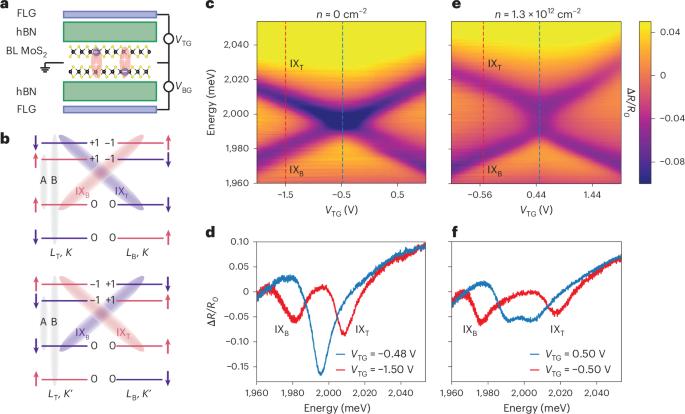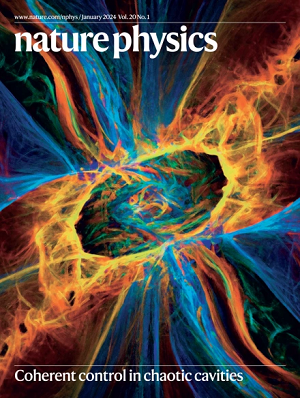双层半导体层间电子相干性的光学特征
IF 18.4
1区 物理与天体物理
Q1 PHYSICS, MULTIDISCIPLINARY
引用次数: 0
摘要
原子薄的过渡金属二硫族化合物中出现的强相关电子现象是凝聚态物理学中令人兴奋的前沿,从双层超导和电子维格纳晶体到正在进行的激子凝聚的研究都有例子。在这里,我们向后者迈出了一步,报告了与过渡金属二硫族双分子层中层间电子之间的相干性一致的具有相反偶极子的激子的非常规杂化的实验特征。我们研究了集成在双栅器件结构中的自然生长的MoS2均匀层,该结构允许独立控制电子密度和面外电场。当电子隧穿作用可以忽略不计时,我们观察到两个层间激子杂交,表现出不同于传统的水平交叉和反交叉的异常行为。我们证明这些观测结果可以用激子之间的准静态随机耦合来解释,该耦合随电子密度增加而增加,随温度降低。我们认为,这种现象表明了层间电子相干性形式的空间波动有序参数,这是一种理论上预测的多体态,但尚未在量子霍尔体系之外的实验中明确建立。激子的凝聚体已经在量子霍尔体系中被观察到,但它们在低磁场下存在的证据仍然存在争议。现在,二硫化钼中光泵浦层间激子之间相干性的证据标志着向确认低磁场下激子凝聚迈出了一步。本文章由计算机程序翻译,如有差异,请以英文原文为准。

Optical signatures of interlayer electron coherence in a bilayer semiconductor
Emergent strongly correlated electronic phenomena in atomically thin transition-metal dichalcogenides are an exciting frontier in condensed matter physics, with examples ranging from bilayer superconductivity and electronic Wigner crystals to the ongoing search for exciton condensation. Here we take a step towards the latter by reporting experimental signatures of unconventional hybridization of the excitons with opposing dipoles consistent with coherence between interlayer electrons in a transition-metal dichalcogenide bilayer. We investigate naturally grown MoS2 homobilayers integrated in a dual-gate device structure allowing independent control of the electron density and out-of-plane electric field. By electron doping the bilayer when electron tunnelling between the layers is negligible, we observe that the two interlayer excitons hybridize, displaying unusual behaviour distinct from both conventional level crossing and anti-crossing. We show that these observations can be explained by quasi-static random coupling between the excitons, which increases with electron density and decreases with temperature. We argue that this phenomenon is indicative of a spatially fluctuating order parameter in the form of interlayer electron coherence, a theoretically predicted many-body state that has yet to be unambiguously established experimentally outside of the quantum Hall regime. Condensates of excitons have been observed in the quantum Hall regime, but evidence for their existence at low magnetic fields remains controversial. Now evidence of coherence between optically pumped interlayer excitons in MoS2 marks a step towards confirming exciton condensation at low magnetic fields.
求助全文
通过发布文献求助,成功后即可免费获取论文全文。
去求助
来源期刊

Nature Physics
物理-物理:综合
CiteScore
30.40
自引率
2.00%
发文量
349
审稿时长
4-8 weeks
期刊介绍:
Nature Physics is dedicated to publishing top-tier original research in physics with a fair and rigorous review process. It provides high visibility and access to a broad readership, maintaining high standards in copy editing and production, ensuring rapid publication, and maintaining independence from academic societies and other vested interests.
The journal presents two main research paper formats: Letters and Articles. Alongside primary research, Nature Physics serves as a central source for valuable information within the physics community through Review Articles, News & Views, Research Highlights covering crucial developments across the physics literature, Commentaries, Book Reviews, and Correspondence.
 求助内容:
求助内容: 应助结果提醒方式:
应助结果提醒方式:


